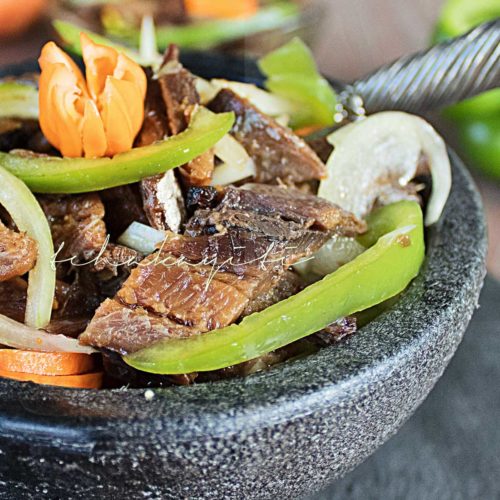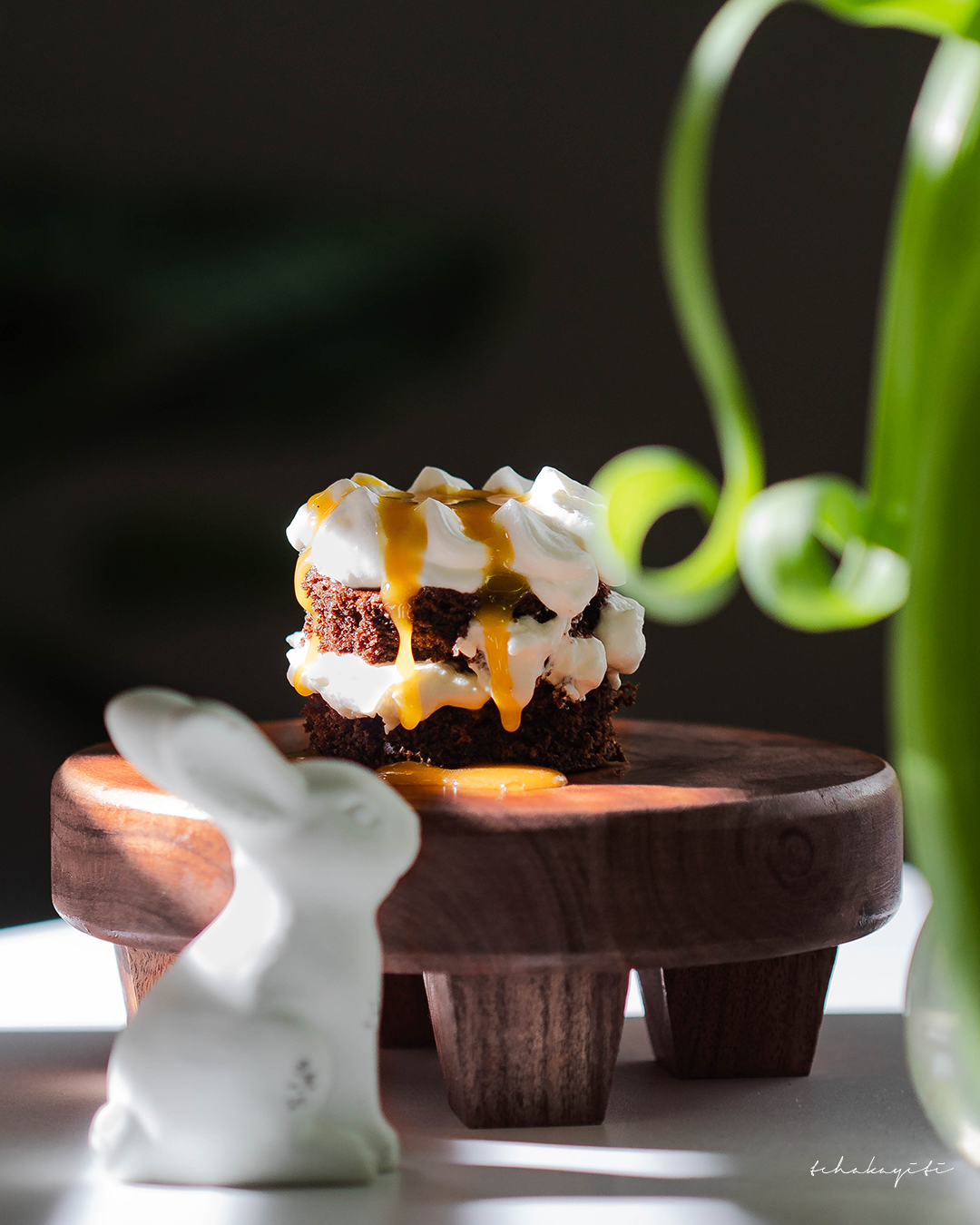For lack of an accurate translation, I use the name “chiquetaille de hareng” throughout this article to refer to this local staple.
In Haiti, when we talk about hareng, we really mean to say “hareng saur” which is French for salted smoked herring.
Some say that “manje deyò” – food eaten out – tastes better than the food served at home. I am known to state the same. I easily grow tired of eating the same things over and over again. Yet, you will never catch me saying so about my mom’s homemade chiquetaille de hareng pictured above. Her recipe for this herring preparation ranks high on my list of favorites.
No one can outrank her chiquetaille de hareng. Not even my grandmother could. If you keep track of this blog, you know I often celebrate my grandmother as my cordon bleu. So if my mom can beat her at this one dish, you should really take my statement seriously.
Similar to a ceviche, chiquetaille is very much like a meat or fish salad or even a pickle that can be prepared with salted smoked herring, codfish, ham or chicken, according to one’s preferences. The meat or seafood of choice is left to cook in some vinegar and oil for a few hours alongside vegetables. Those typically include onions, carrots, whole peppercorn, piment bouc and sometimes bell pepper.
My favorite chiquetaille is the herring version.
I particularly love my mom’s chiquetaille de hareng because the fish remains true to itself. While some people may try to use olive oil or wine vinegar, she sticks to basic ingredients. She marinates the fish in your regular white vinegar and oil, which don’t overpower it. Her smoked herring to vegetable ratio is also fair. She cuts the fish in bigger chunks than the remaining ingredients. The herring, thus, does not end up being buried under a pile of carrots, onions, and bell peppers.
Out of the many ways we eat this fish, the chiquetaille has to be my preferred one. We eat it in a red sauce, typically made out of tomato paste, or cooked in oil for breakfast alongside boiled plantains. This fried herring recipe also finds its way to the lunch and dinner table with our famous mayi moulen. Some even serve it as an appetizer.
However, when it comes to having it as an appetizer, my go-to recipe is the chiquetaille. It pairs perfectly well with breads, crackers, or even some good local cassave. I am talking about my mother’s chiquetaille, of course.

I will never stop saying that my mother makes the best chiquetaille de hareng known to mankind.
Of course, she scolds us for saying that. My sister and I have made it a bad habit of criticizing others’ preparation. And my mothers fears we may end up saying it publicly.
I just made her worst fear a reality. Oops…But not oops…
In my defense, “leu sa bon, fo’w di li bon.” When something is done well, you must sing its praises.
But don’t just take my word for it. Try her instructions highlighted below. You will love her recipe.

Chiquetaille de hareng (salted smoked herring ceviche)
Ingredients
- 1/2 lb Salted smoked herring filet
- 1 Onion
- 1 Carrot
- whole peppercorn to your taste
- 1 Piment bouc
- 7.5 oz Vinegar white or apple cider to your taste
- 6 tbsp Vegetable oil
Instructions
- Flake the herring filet, or cut it using scissors
- Put the herring in a glass container
- Thinly slice the onion, carrot and piment bouc
- Add them to the flaked herring along with the whole pepper
- Pour the vinegar and oil over. Cover.
- Let the chiquetaille macerate for a couple of hours or days (the flavors develop and fully blend with time) and serve with fresh bread, crackers or cassava.








8 Comments
Do you soak the smoked herring premye? I was told to soak in water to release a little of the salt and smoke so its not so potent/salty. What is your experience? Mesi!
Yes, you should totally soak it! Some people even soak it twice to reduce the amount of sodium. Can’t believe I skipped that in the recipe. I will fix it now. Thank you for calling me out on that!
MG, This article dedicated to me, is it my Christmas present!!! Merry Christmas to Annick and all reading it.
Tout à fait Annick c’est la même chose sauf qu’on fait frire d’abord la pâte qu’on fend ensuite en deux pour y mettre la farce au choix et un peu de salade de laitue et de tomate. Il arrive qu’on fasse cuire avec la farce et là on parle de danquite. Je vous mets un lien https://www.google.com/search?q=recette+de+boquite&tbm=isch&tbo=u&source=univ&sa=X&ei=nyKgVPeJE5XzapnBgogN&ved=0CDMQsAQ&biw=1365&bih=693
Hummmmm ! Ici aussi on en mange beaucoup. On en met aussi dans les pizzas, les boquittes (les gros pâtés de chez nous mais fait comme un sandwich) Comme pour la chiquetaille de morue on en trouve en bocaux dans les supermarchés. Il est chiquetaillé encore plus petit que sur la photo, presque mixé. Je me demande d’ailleurs s’il ne l’est pas. En fait c’est facile de le chiquetailler de cette façon parce que le hareng saur qu’on trouve ici que ce soit en filet ou entier est plus tendre que celui de chez nous.
Je vais vite tester la recette de votre mère et vous en dirai des nouvelles.
les boquittes dont vous parlez se rapprochent-elles de notre pâté “kòde”?
A mon gout, ca se deguste bien sur un biscuit tartine d’une couche legere de mayonnaise. Je trouve ca gourmand et ca me rappelle nos succulentes barquettes fourrees d’autrefois qui etaient servies aussi simplement dans les familles lors des reunions, anniversaires, receptions.
oui, si on aime la mayonnaise 😉